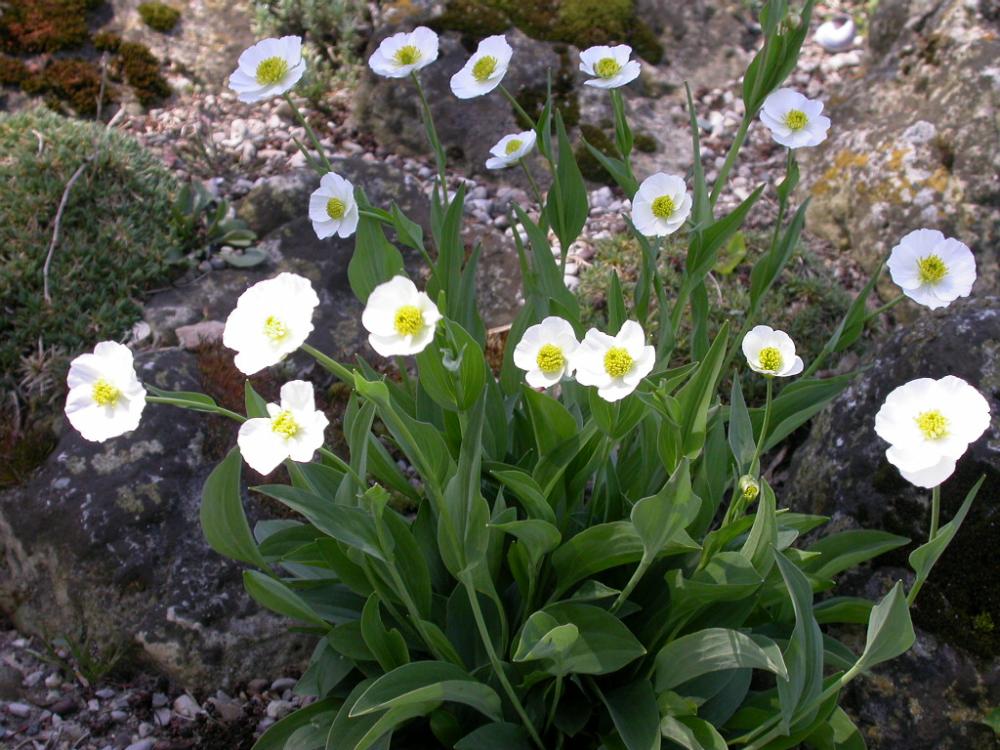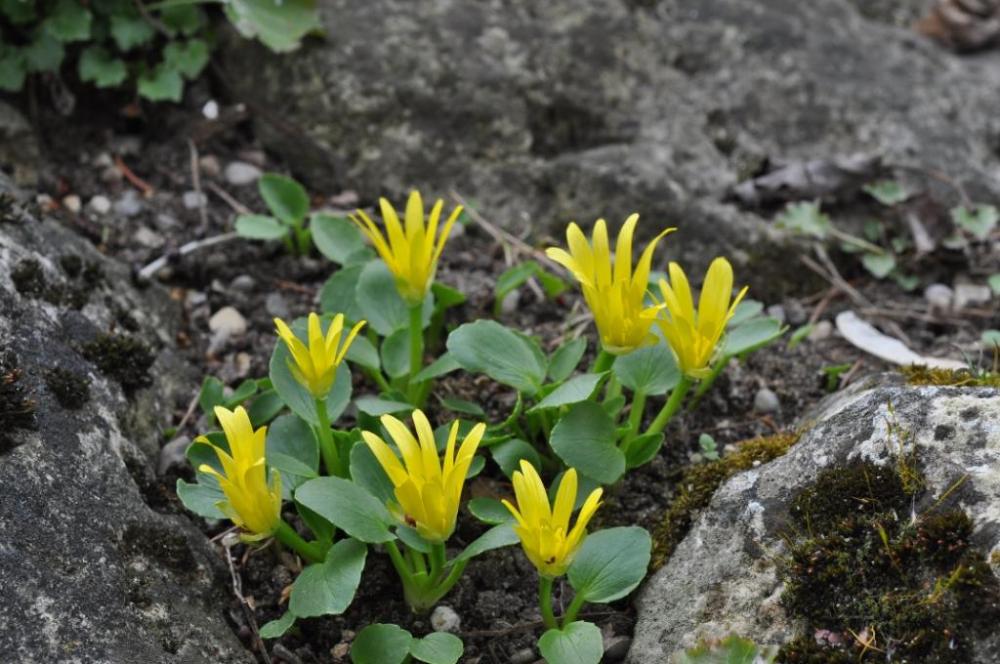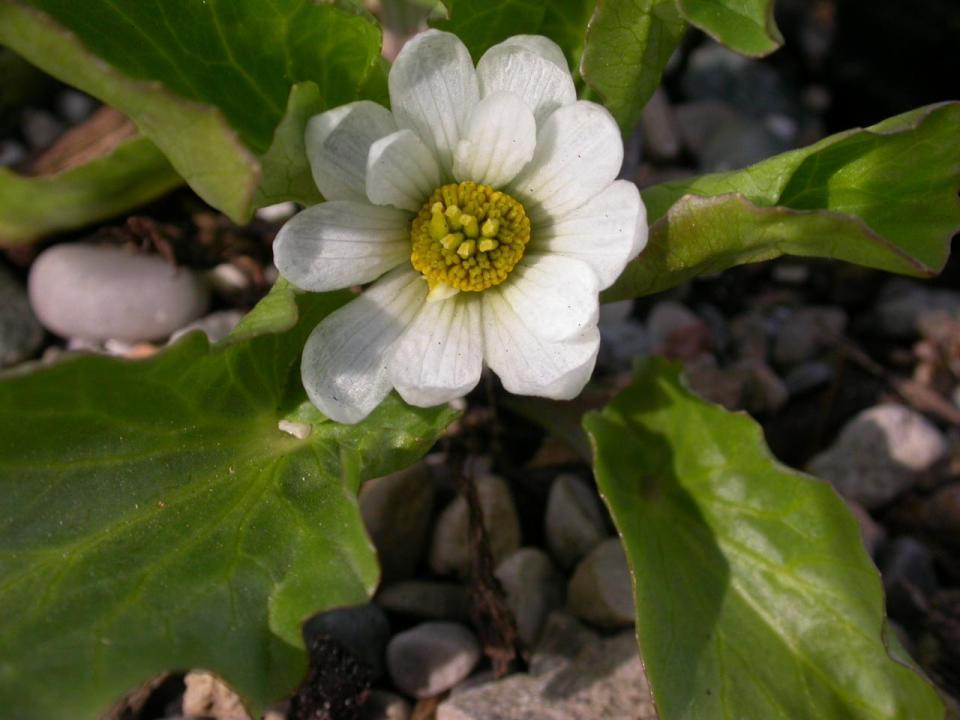Ranunculaceae

Typically, we regard the members of Ranunculaceae as lush perennials growing in rich, moist soils and giving us flowers that may be either flamboyant as the aquilegia spp. or as elegant as Anemone spp. A quieter demeanor can be found in some of the alpine buttercups. Ranunculus alpestris is a little fibrous rooted clump that covers wet areas where the high elevation snow collects. The tiny lobed leaves are a lustrous green and perfectly set off the perfectly sized white buttercups. Common throughout the European Alps, it favors the richer soils of the high pastures - so lime is in its diet. This was one of the first "alpine" plants I grew when I first came to rock gardening - and it was easy to please and gracious with its flowers. At some point in the 1990's I lost it in a hot year, and until this year, neglected to source it again. Listed in Piatek's catalogue from a fresh wild collection, I added it to the order and almost everything germinated. Knowing how easy it is to grow, it will make a reappearance in our catalogue.
Another white-flowered species is Ranunculus crenatus. In this case, the heart-shaped leaves have tiny "crenations" along the edge. The flowers are so delicate, diaphanous and so white that they embody the essence of spring. Both of these species are perfect for trough planting and adapt well to a clay/crevice where with their stoloniferous nature, they make a perfect spreading mat in which one may put a smallergentian such as G. verna. They will bloom at similar times. Both Ranunculus spp. will grow in bright light if attention is given to watering. The clumping effect makes them perfect for a vertical aspect.

Going out-of-range, consider Ranunculus kochii from the drier mountains of Central Asia. I think this came from the Czech's some 15 years ago when Andrew Osyany operated Karmic Exotic Seeds. They came as tubers - small enough to fit in with the other seeds. Again, it is a plant that emerges with the melting snow - it is one of the first flowers in our garden, often appearing in late March/early April. Flowers come first and are a very bright, deep yellow which attracts the few bees and flies that brave the cold. Of course in its native habitat, it must grow early and quickly, for soon there will be no moisture, and all will be desert. By June the leaves have matured and wither away. Lifting the plants then or later before frost, one can separate the little tubers much as one would do with Dodecatheon spp. A logical way to set off the plant would be to put it in a mat of Arenaria spp. or Gypsophila aretioides. The mat would also help to shield the roots from excess water and heat.
Returning to those with wet feet, Anemone trullifolia v. linearis is an endemic from Baima Shan, Yunnan. From the basal clump long, narrow leaves rise up, thrusting the trident-shaped tip menacingly outward as if in the hand of Poseidon. The distinctive red, basal stain, coupled with the bright yellow flowers accentuates the aggressive overall look and one can't help but be drawn in. Its requirements are much like the more widely distributed A. obtusiloba, rather moist and rich, even to the point of being boggy. It grows at the base of limestone cliffs - rich, "garden" soil for sure.

From western North America, I would pick Caltha leptosepala as a candidate for eastern gardens. Widespread from Alaska to the southern Rockies it is prominent in the switch-back "bowls" as you drive out of the Beartooth into Wyoming. Fed by cold snowmelt, it rises early in our garden in late March/early April bearing white-sepaled buttercups with a touch of blue on the back. The centre is a bright gold and the flowers sit cupped by the heart shaped leaves - one of the earliest flowers of the season. Give it vernally wet conditions in a rich loamy soil and it will withstand a considerable amount of heat and drought later - even in pots which makes it a candidate for trial in a trough. The restricted soil space will help to dwarf its growth. Full sun won't bother it either. Not your usual container plant. Experiment - drop the dull stodginess of winter. Spring arrives!

Comments (0)
Add new comment